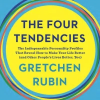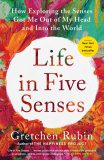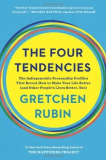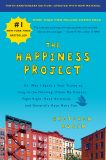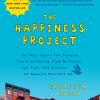Ancient philosophers and modern scientists agree: the most essential key to happiness is strong relationships with other people.
We all have many kind of relationships that contribute to our happiness, and one of the most important is our friendships. My happiness-project resolutions aimed at friendship include “Cut people slack,” “Show up,” “Make three friends,” “Bring people together,” “Remember birthdays,” “No gossip,” and “Say hello.”
Here are eight psychological terms and principles that I’ve found helpful as I’ve been trying to build and strengthen my friendships.
1. Triadic closure. In a phenomenon called “triadic closure,” people tend to befriend the friends of their friends – and this is very satisfying. Friendships thrive on inter-connection, and it’s both energizing and comforting to feel that you’re building not just friendships, but a social network. I now make much more of an effort to help my friends become friends with each other, and to befriend friends’ friends. (Total non sequitur: “befriend friends’ friends” is quite a phrase! Bad writing, but I couldn’t resist.)
2. Emotional contagion. “Emotional contagion” is a strong psychological effect in which we “catch” the happy, sad, or angry moods of others. Someone in a happy, energetic mood will help boost the moods of others, and obviously, this creates a very pleasant atmosphere. Unfortunately, negative moods are more contagious than positive moods; if I’m crabby, I can trigger a wave of crabbiness in my friends. I’m trying to do a better job of living up to my duty to be happy.
3. The mere exposure effect. Familiarity breeds affection. The “mere exposure effect” describes the fact that repeated exposure makes people like music, faces — even nonsense syllables — better. Because of the “exposure principle,” the more often a person sees another person, the more intelligent and attractive that person will be ranked. So I try to put myself in situations where I’m going to see a lot of the same people over and over.
4. Fundamental attribution error. The fundamental attribution error is a psychological phenomenon in which we tend to view other people’s actions as reflections of their characters, and to overlook the power of the situation to influence their action. In other words, we over-emphasize the role that personality plays in shaping others’ behavior, and under-emphasize the role of outside forces. I assume that the guy in the drugstore is an inconsiderate jerk because he rushed ahead of me to get to the counter, when in fact, he’s very considerate, and he’s rushing to get home with the medicine for his sick girlfriend.
5. Warmth. Attraction is reciprocal; we tend to like people more when we think the like us. So if I’m friendly and openly pleased to see someone person, that person is more likely to feel friendly toward me. Instead of playing it cool, I try to show a lot of warmth.
6. Smiling. As obvious as it seems, studies do show that we’re perceived as more friendly when we smile more (it also helps to have an expressive face, to nod, to lean forward, to have a warm tone). The sheer amount of time smiling makes a very big difference on perceived friendliness.
7. Subliminal touching. Studies show that subliminal touching – that is, touching touching a person so unobtrusively that it’s not noticed – dramatically increases that person’s sense of well-being and positive feelings toward the toucher. And vice versa. This fleeting touching might be something like touching a person’s back as you walk through a door, or touching his or her arm for emphasis.
8. Situation evocation. In situation evocation, we spark a response from people that reinforces a tendency we already have — for example, if I act irritable all the time, the people around me are probably going to treat me with less patience and helpfulness, which will, in turn, stoke my irritability. If I can manage to joke around, I’ll evoke a situation in which the people around me were more likely to joke around, too. In other words, I make my own weather.
As with many aspects of happiness, people often assume that friendship should flow easily and naturally, and that trying to “work” on it is forced and inauthentic. But in the bustle of everyday life, it’s easy to forget to take time for our real priorities. Since I’ve started trying to keep my happiness-project resolutions, I’ve found that my friendships have expanded and deepened. It’s worth the effort.
From 2006 through 2014, as she wrote The Happiness Project and Happier at Home, Gretchen chronicled her thoughts, observations, and discoveries on The Happiness Project Blog.

